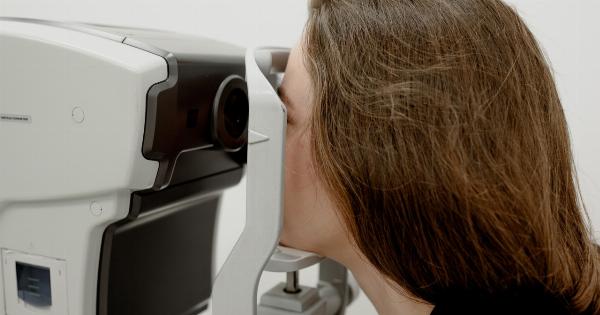As we go through life, our eyesight can change and be affected by various vision problems. From nearsightedness to cataracts, these issues can have a significant impact on our daily lives.
That’s why it’s essential to have comprehensive vision problem coverage that ensures all your eye-related needs are met. In this article, we will explore the importance of all-inclusive vision problem coverage and how it can benefit you.
The Importance of Vision Problem Coverage
Having vision problem coverage is crucial for several reasons. First and foremost, it allows you to take care of your eye health without worrying about the financial burden.
Regular eye exams, prescription eyeglasses, and contact lenses can be expensive, especially if you have a pre-existing vision problem or require specialized treatments.
Secondly, vision problem coverage ensures that you receive timely and appropriate treatment for any eye conditions you may have. Early detection and treatment of vision problems are essential to prevent further deterioration and potential complications.
Without proper coverage, you may be tempted to delay or skip necessary eye exams and treatments, which could have long-term consequences for your eyesight.
What Does All-Inclusive Vision Problem Coverage Include?
All-inclusive vision problem coverage typically includes a range of services and treatments to address various eye conditions. Here are some of the key components you can expect:.
1. Comprehensive Eye Exams:
Regular eye exams are the foundation of vision care. They not only evaluate your visual acuity but also help detect and monitor any underlying eye diseases or conditions such as glaucoma, diabetic retinopathy, or macular degeneration.
All-inclusive coverage ensures that your routine eye exams are covered, allowing you to schedule regular check-ups with your eye care professional.
2. Prescription Eyewear:
Whether you need glasses or contact lenses to correct your vision, all-inclusive vision coverage will typically cover a portion or all of the expenses. This includes the cost of frames, lenses, contact lens fittings, and follow-up appointments.
With coverage, you can choose the eyewear that suits your style and visual needs without worrying about the cost.
3. Surgical Procedures:
If you require surgical intervention for conditions like cataracts, glaucoma, or refractive errors, all-inclusive coverage can help alleviate the financial burden.
This coverage often includes the cost of the procedure, anesthesia, and post-surgical care. It ensures that you have access to the best possible treatments and reduces the out-of-pocket expenses associated with eye surgeries.
4. Treatment for Eye Diseases:
Eye diseases such as glaucoma, diabetic retinopathy, and macular degeneration require ongoing treatment and monitoring.
With all-inclusive vision problem coverage, you can receive the necessary medications and therapies to manage these conditions effectively. This not only helps preserve your vision but also ensures that you can afford the long-term treatment required to control and slow down the progression of the disease.
5. Specialty Services:
Some vision problems may require specialized services such as low vision rehabilitation, pediatric eye care, or vision therapy.
All-inclusive vision problem coverage often includes these specialty services, ensuring that individuals with unique eye care needs can access the appropriate treatments without financial strain.
Benefits of All-Inclusive Vision Problem Coverage
Now that we understand what all-inclusive vision problem coverage includes, let’s explore the benefits it offers:.
1. Financial Security:
By having all-inclusive vision problem coverage, you can avoid unexpected expenses related to eye exams, treatments, and prescription eyewear.
This financial security allows you to focus on your eye health without worrying about the impact on your wallet.
2. Early Detection and Treatment:
Regular eye exams covered by comprehensive vision problem coverage enable early detection of potential issues, increasing the likelihood of successful treatment and preserving your visual acuity in the long run.
It empowers you to take a proactive approach to your eye health.
3. Access to Quality Care:
With all-inclusive vision problem coverage, you can choose eye care providers and specialists who meet your specific needs.
This allows you to access high-quality care without being limited to a select few providers or compromising on the quality of treatment.
4. Affordability of Specialty Services:
Specialty services like low vision rehabilitation or vision therapy can often be expensive.
However, with all-inclusive vision problem coverage, these services become more affordable and accessible, ensuring that you receive comprehensive care tailored to your specific condition.
5. Peace of Mind:
Knowing that your eye health is protected with all-inclusive vision problem coverage brings peace of mind.
You can face any potential vision problems or emergencies with confidence, knowing that you have the necessary resources and financial support to address them promptly.
Conclusion
All-inclusive vision problem coverage provides the peace of mind and financial protection necessary to maintain and improve your eye health.
By covering comprehensive eye exams, prescription eyewear, surgical procedures, treatment for eye diseases, and specialty services, it ensures that all your eye-related needs are met. With this coverage, you can enjoy access to quality care, early detection and treatment, and the affordability of specialized services.
Prioritizing your eye health is essential, and having all-inclusive vision problem coverage empowers you to do just that.




























